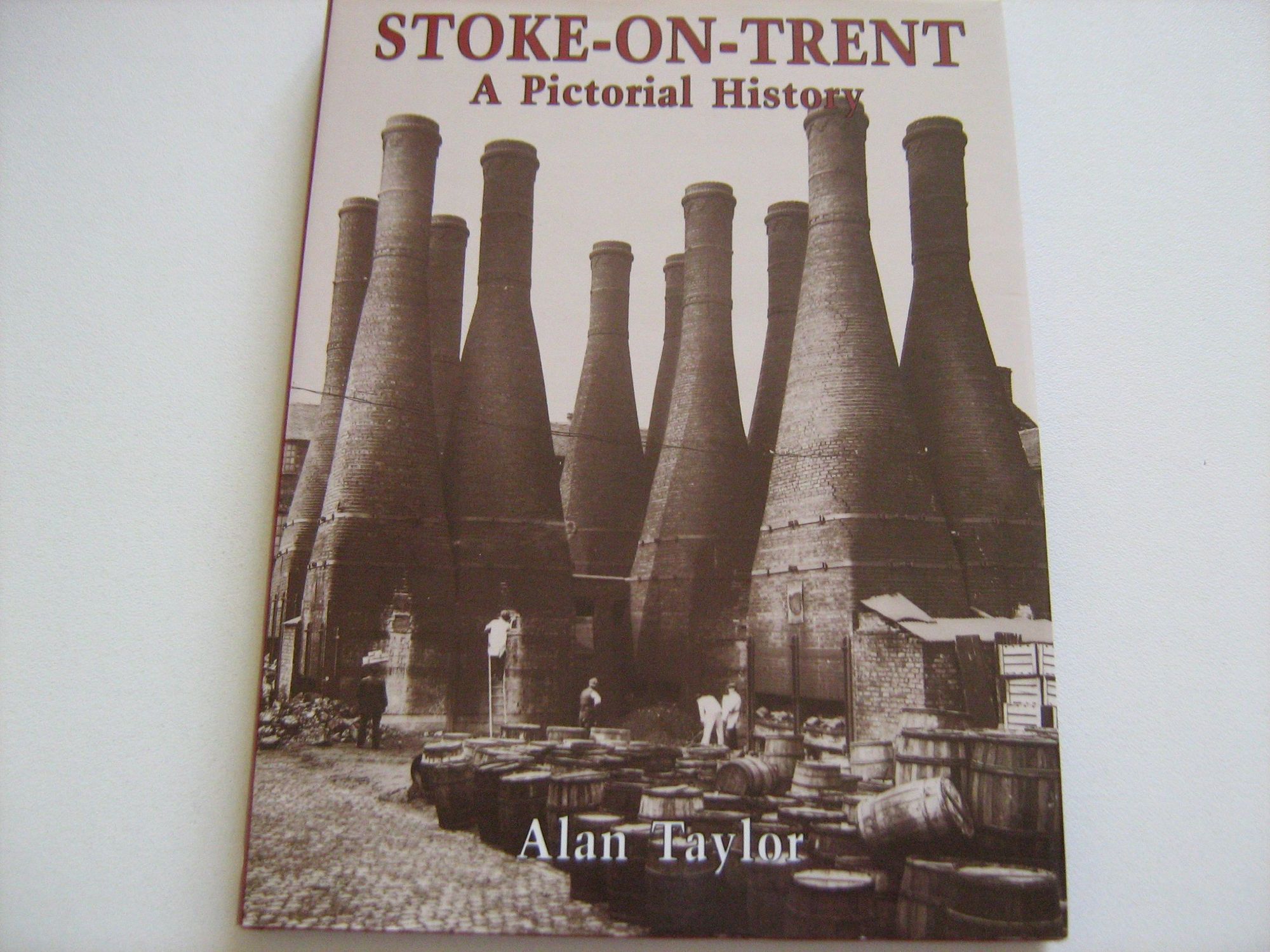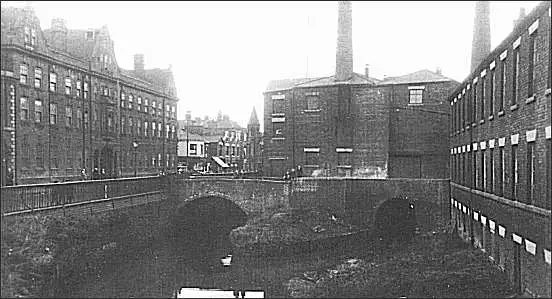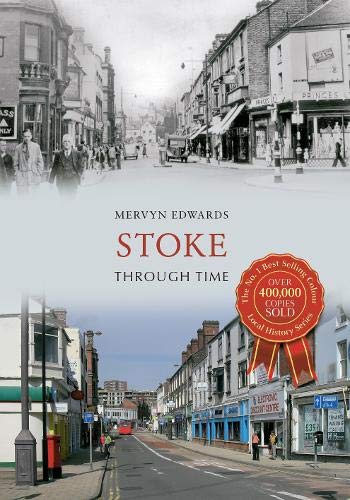At the height of the industrial revolution, canals, railways and tramlines crisscrossed the landscape of Stoke-on-Trent. The now-defunct Newcastle-under-Lyme Canal was completed in 1800 and ran for over 3 miles from Newcastle to the Trent & Mersey Canal at Stoke.
But did you know that part of it is still there, hidden underground? Or that an act of deadly heroism played out on this now-forgotten stretch of canal that is still commemorated every year?

The canal was not well used as it was only allowed to supply coal to the pottery trade because of an agreement that a rival canal, Sir Gresey's Canal, was to be the sole coal transporter for 21 years. Because of this, the waterway was mainly used for limestone and for coal to supply the Minton, Spode and Wolfe factories.
It ran from near the Boat & Horses pub in Newcastle, to the Trent & Mersey Canal in Stoke.

Disaster Strikes
Towards the end of the 19th century, London Road would have been a cobbled highway, with tramlines stretching the length of it. The Newcastle-under-Lyme Canal ran alongside the road, separated by metal railings and trees. Bridges crisscrossed the canal along the way.
At half-past 4 on Friday the 13th of April 1894, 4-year-old Jane Ridgeway was playing on the towpath to the canal on London Road. She was a local girl, living at 8 Pigs Face, Canal Side, Boothen, in Steele's cottages with parents William and Elizabeth Ridgway. As she was playing she slipped and fell into the canal, and as she was screaming and splashing in the water, a nearby tram was just about to set off from the West End terminus. It is lucky for little Jane that it hadn't set off yet, as trams in those days were steam-powered and very loud. The tram conductor, Timothy Trow, without thought for himself ran from the tram and jumped into the cold canal water to save the young girl.
However, Timothy Trow could not swim, and the water was cold. He had walked partway across the shallow part of the canal but suddenly sank much deeper and he called out that he had cramps and needed help. A passerby, Mr Henry Lloyd, jumped into the canal to help him. Another passerby, Mr John Forrester, had also jumped in and managed to rescue little Jane, he also tried to help Timothy, but he could not.
Unfortunately, Timothy Trow lost his life in a heroic and selfless attempt to save Jane Ridgeway. The canal was dredged to recover his body.

Sad Drowning of a Tram Conductor Lost in Trying to Save a Child
At about half-past four yesterday afternoon a sad case of drowning occurred at the West End, Stoke. Whilst passing the canal the conductor of the London Road car noticed a child in the water. He at once jumped off the platform and without losing a moment dived into the water to rescue the child. By some means, however, his strength failed him and the man was himself drowned. The child was rescued by another man and the police are dragging for the body.
— Staffordshire Sentinel 14th April 1894

ERECTED
BY PUBLIC SUBSCRIPTION
IN GRATEFUL MEMORY OF
TIMOTHY TROW
TRAM CONDUCTOR. AGED 21 YEARS
WHO LOST HIS LIFE BY DROWNING
NEAR THIS SPOT
IN A HEROIC ATTEMPT TO SAVE
THAT OF A CHILD, APRIL 13TH 1894
— Inscription on the memorial
Remembering Timothy Trow
News of the selfless man who had tried to save the drowning girl travelled fast. At only 21 years old the tragedy was felt deeply by the local community. There was a local collection for a gravestone and a memorial to be erected for him. The funeral was also well attended.
The funeral of the deceased took place this afternoon at Hanley Borough Cemetery. The cortege was timed to start at the deceased's home, 9 William Street, at a quarter to three, and as soon as two o'clock little groups assembled in the street, which is a small throughfare running off Broad Street. After half an hour, a large crowd had assembled, and the route to the cemetery was lined by many who had heard to express their sympathy with the deceased's relatives and their high appreciation of the noble sacrifice made by the brave tram conductor.
Staffordshire Sentinel
There were over 300 subscriptions and donations from local people for the memorial, most from poor working men and women who had been touched by his selflessness. The deputy mayor at the time, Alderman E Baddeley, formally unveiled the memorial on Tuesday 4th October 1894.
Every year Timothy Trow Day is celebrated in the local community to remember him. Jane's descendants, her granddaughter Linda Potter and her grandson Alan Huggins attended a special service to remember him.
There is also a nearby street named after him on a nearby housing estate called 'Trow Close'.

IN GRATEFUL MEMORY OF
TIMOTHY TROW
AGED 21 YEARS
TRAM CONDUCTOR
WHO LOST HIS LIFE BY DROWNING
IN AN HEROIC ATTEMPT TO SAVE
THAT OF A CHILD
AT BOOTHEN, STOKE-ON-TRENT
APRIL 13TH 1894
— Inscription on Timothy Trow's grave stone

The Remains of the Canal
Although the canal no longer exists, it was abandoned in 1935 and filled in, if you know where to look, there are many remnants of the canal left. The canal began in Newcastle at a wharf near the Boat & Horses pub, which was named for the canal. Where it ran along the A34 there is a small surviving part of the canal that still holds water, opposite the hospital.
It then ran along the length of London Road, leaving a few fragments of its existence. There is a bridge that still stands on Corporation Street with a fantastic barge painted onto the floor below, where the canal would have run. The bridge is still intact, with the parapets, the fence and even the gate that would have led down to the towpath.



The Canal in Stoke
As the canal came into Stoke, it split into two tunnels that went under the town. One went into the factory above it, the other travelled under the town, then opened up into the Spode site, where the canal then flowed underneath the Fowlea Brook and out into the Trent & Mersey Canal.
The tunnel is still there under the ground but is now sealed off. It was drained before 1939 and was used as an air-raid shelter for the town during WW2. The hump in the road in Church Street, Campbell Place is where the tunnel is still beneath the road. One end of the tunnel was in the town, and the other was in the Spode site, as you can see in the photographs in this article. Aqueduct Street carried the canal over Fowlea Brook which flowed into a culvert. Aqueduct Street is now the entrance to the Civic Centre in Stoke. The name is the only trace left of the canal in this area.
Where the canal joined the Trent & Mersey Canal, the only evidence left is a sign, which marks the junction, that Stoke-on-Trent City Council erected. There was a stretch of the canal still surviving up until the 1970s when the building of the a500 meant it had to be filled in and built over.



Your Memories
If anyone has any knowledge of the tunnel underneath the town, or any memories, I would love to hear from you!
Thank you for reading!
If you like what you have read, please feel free to support me by sharing this article, following and signing up for my newsletter and/or buying me a coffee!
Thank you.

I use the British Newspaper Archive to help with my research and you can sign up for a free trial here.
If you are interested in your local and family history, you can sign up for a free trial of Find my Past and access all archived local records and find your past.
If you are interested in the history of Stoke, then check out these books on Amazon.

Stoke-on-Trent: A Pictorial History (Pictorial History Series)
by Alan Taylor
Check out my recommended reading list







